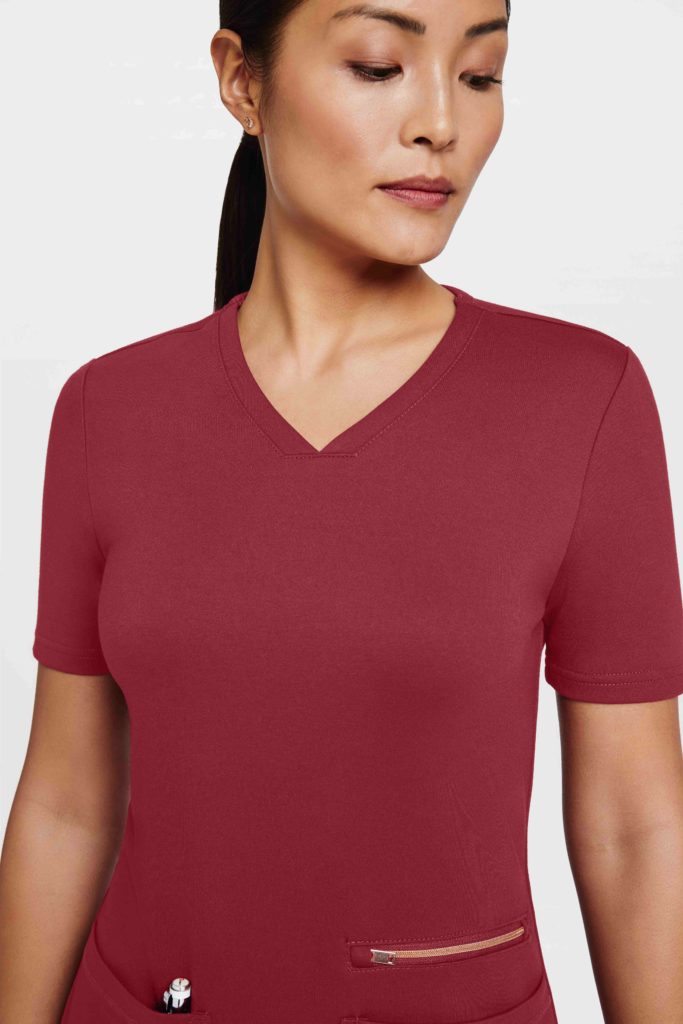
Dermatologist vs. Esthetician: What Are the Main Differences?
These days, some people seem to undergo treatments to change the appearance of their hair, skin, and nails as if they were swiping through Instagram or Snapchat filters. But have you ever wondered what sort of hair and skincare specialists are behind it all and what credentials they hold? Depending on the treatment, they could be an esthetician or a dermatologist.
Both dermatologists and estheticians are experts in hair, skin, and nails. What does a dermatologist do and what does an esthetician do? It depends on whether you need a new skin-care routine or diagnosis and treatment for more serious skin conditions. Essentially, dermatologists address skin problems while estheticians focus on cosmetic concerns.
We see dermatologists when we need an expert medical opinion regarding a skin condition. We interact with estheticians at the spa or salon. Read on to learn when to see an esthetician vs. a dermatologist. We’ll even provide details on how to become a dermatologist.
What is a dermatologist?
Simply put, dermatologists are skin doctors. They also specialize in treating problems that affect the hair and nails. These physicians work with people in all stages of their lives, from infants to seniors.
Dermatologists are medical doctors (MDs) who have undergone four years of undergraduate pre-med coursework, four years of medical school, one year of internship, and three years of residency. Many go on to become certified by the American Board of Dermatology.
As medical doctors who have many years of schooling under their belts, dermatologists are qualified to diagnose and treat conditions as serious as skin cancer.

Esthetician vs. dermatologist for acne
If you’re debating who to see to help clear up acne and prevent future breakouts, the answer is a dermatologist. Not only are they experts when it comes to acne, but they can also identify and treat thousands of other conditions. So if you have a question about an issue affecting your skin, hair or nails and want an expert medical opinion, it’s time to see a dermatologist.
Below are some of the conditions that these physicians can identify and treat. If you’re experiencing any of the following, make an appointment with a dermatologist as soon as you can. If you’re not sure how to use the list below to categorize your symptoms, don’t worry. But if you have conditions like new or oddly shaped growths, spots, acne, eczema, or hair loss, these can be signs of skin issues or more severe conditions.
Common skin conditions that dermatologists can diagnose and treat include:
- Acne and acne scarring
- Liver spots
- Eczema
- Some autoimmune diseases
- Some cancers
- Canker sores
- Hives and rashes
- Dermatitis
- Hair diseases and hair loss
- Itchy skin
- Scars
- Moles
- Nail diseases
- Pigmentation disorders
- Psoriasis
- Rosacea
- Inflections
- Skin allergies
- Spider and varicose veins
- Vitiligo
What is an esthetician?
Beauty isn’t skin deep, but an esthetician might argue that the occasional facial and a bit of makeup never hurt. In short, estheticians are professionals who work to beautify the skin. They’re not physicians but licensed technicians (like hairstylists) who provide professional cosmetic services. If you have a mole, severe acne, or a skin allergy, you’ll want to see a dermatologist. But, if you want a bikini wax or chemical peel, you can make an appointment with an esthetician.
Estheticians have no training or license to do medical work, so they cannot diagnose skin conditions or administer injections like Botox or fillers. They also can’t prescribe medications, and they shouldn’t recommend treatments that aren’t cosmetic.
But just because estheticians aren’t doctors doesn’t mean that they didn’t undergo training to be qualified to perform their work. Licensed estheticians complete a training program or apprenticeship, pass an exam, and get a license in their trade. At esthetician school, students learn all about cosmetology and prep for state licensure exams, which they must pass before being able to practice.

When should you see an esthetician?
See an esthetician whenever you’re craving a dose of self-care at the spa, but don’t seek out these technicians if you think you’re experiencing a possibly serious medical issue that’s affecting your skin.
Here are some common services that estheticians provide:
- Makeup application
- Eyebrow tinting
- Facials
- Exfoliating
- Microdermabrasion
- Chemical peels
- Body wraps
- Spray tans
- Waxing and other hair removal techniques
- Eyelash extensions
Dermatologist vs. esthetician salaries
If you consider the merits of an esthetician vs. dermatologist career, salary may factor into your decision. In the United States, the current average esthetician’s annual salary is $34,090, whereas the average annual salary in dermatology is $200,342. While a dermatologist’s salary reflects the required education and the necessity of medical care, both positions are based on a desire to help people and are worthy of respect.

What are medical esthetics?
Maybe you’ve heard of medical spas. They’re neither a doctor’s office nor a vacation destination. Medical spas are a hybrid of medicine and esthetics. These spas may be why some would confuse dermatologists and estheticians (especially in the reality TV world).
Medical esthetics does not include the beauty treatments that estheticians provide, nor do they address the medical conditions that dermatologists diagnose. Instead, this field focuses on cosmetic procedures.
The description of medical esthetics only gets tricker: This field does not include surgery. That is, breast augmentations or facelifts are not part of this designation. This field, instead, focuses on services that are neither beauty treatments nor invasive surgeries. These services include injections, laser treatments, micro-needling, anti-aging regimens (including Botox), fillers, chemical peels, resurfacing treatments, and hair transplants.
A doctor performs medical esthetic work, but not a dermatologist. Esthetic physicians attended an undergraduate pre-med program and medical school before training in various specialties throughout their residency. Unlike dermatologists, who follow a similar educational path, esthetic physicians do not provide medical interventions so much as cosmetic ones.
Whether you work in medicine or cosmetology, you could use a pair of comfortable scrubs. We won’t judge you if you curl up in them after work while watching your favorite reality series. We promise they feel that good.